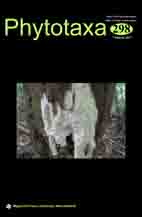Abstract
The genus Eriosynaphe had a peculiar taxonomic history by having been considered also as member of the genus Johrenia in addition to originally having been established in Ferula. It has traditionally been regarded as monotypic and no previous molecular study examined its phylogenetic position. Based on sequences of the nrDNA ITS region, here we show that Eriosynaphe is ‘deeply’ nested in one of the well supported and repeatedly recognised clades of Ferula, thus arguing for its return to the genus Ferula. Additionally, a new species, Ferula mikraskythiana endemic to the Dobrogea region of southeastern Romania is described in the present paper. This species, with its overall habit and mericarp structure, closely resembles Eriosynaphe longifolia though it differs from the latter by its much larger stature, the morphology of the leaf terminal lobes and a distinct phenology. Moreover, F. mikraskythiana is a narrow endemic to a region beyond (westward to) the wide distribution range of E. longifolia.

